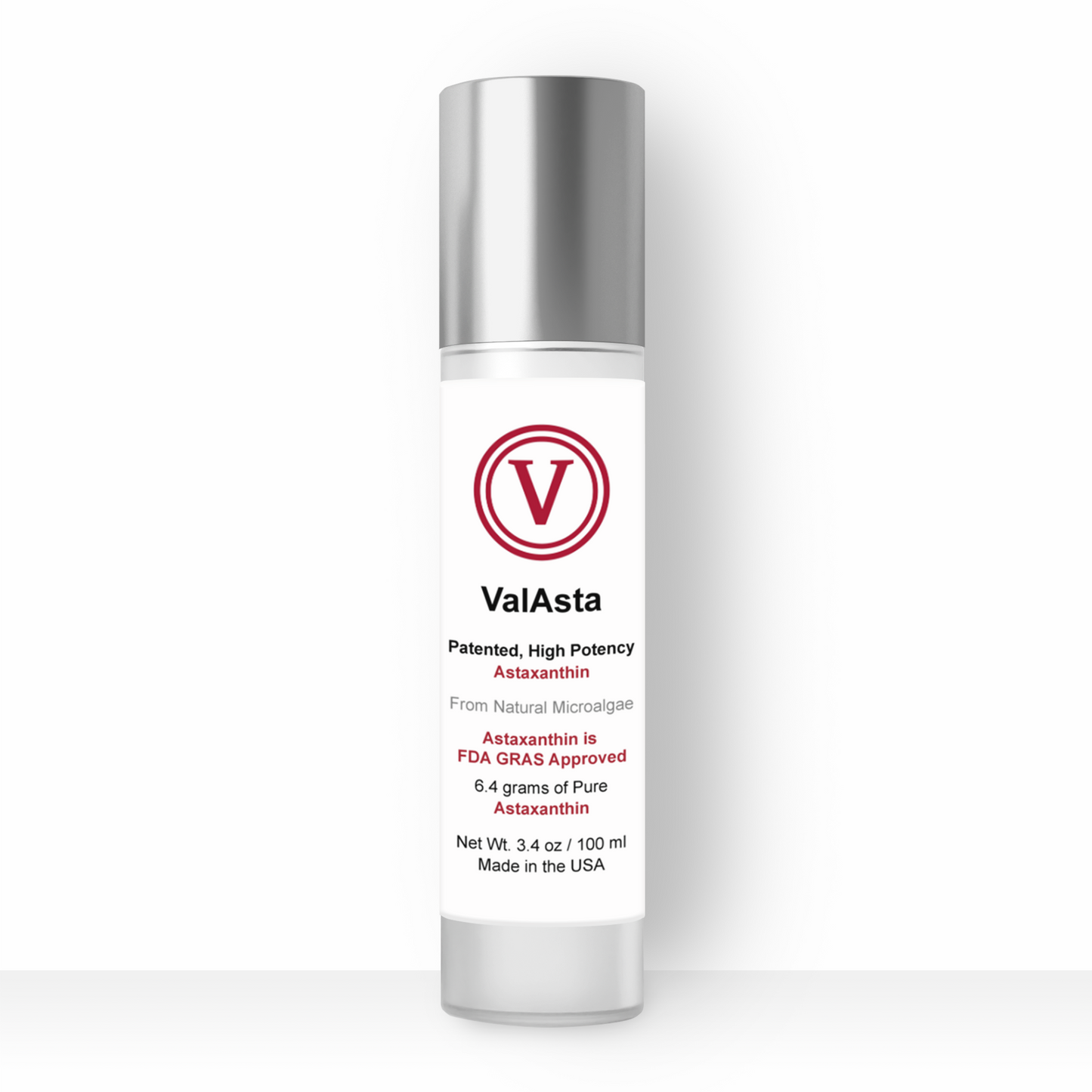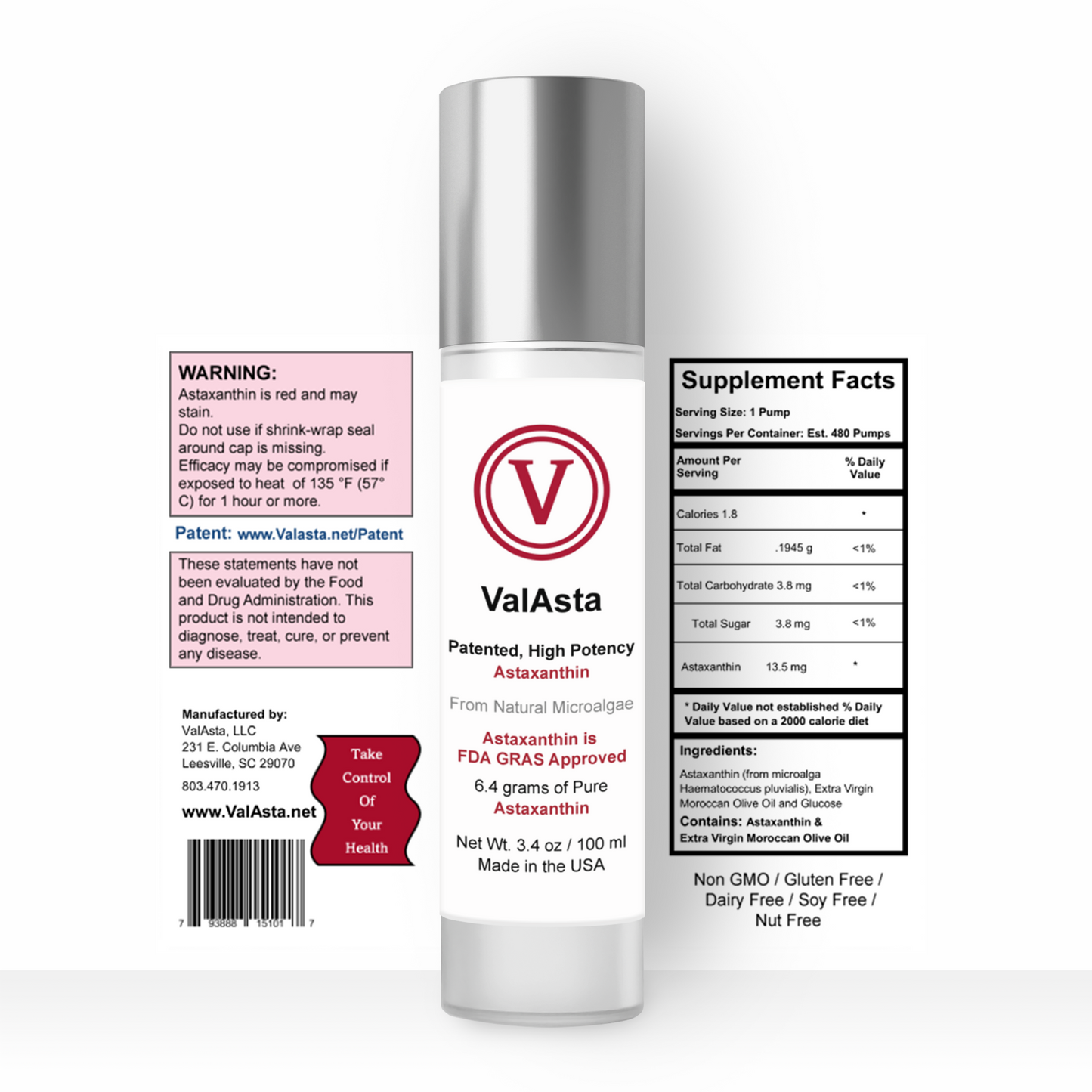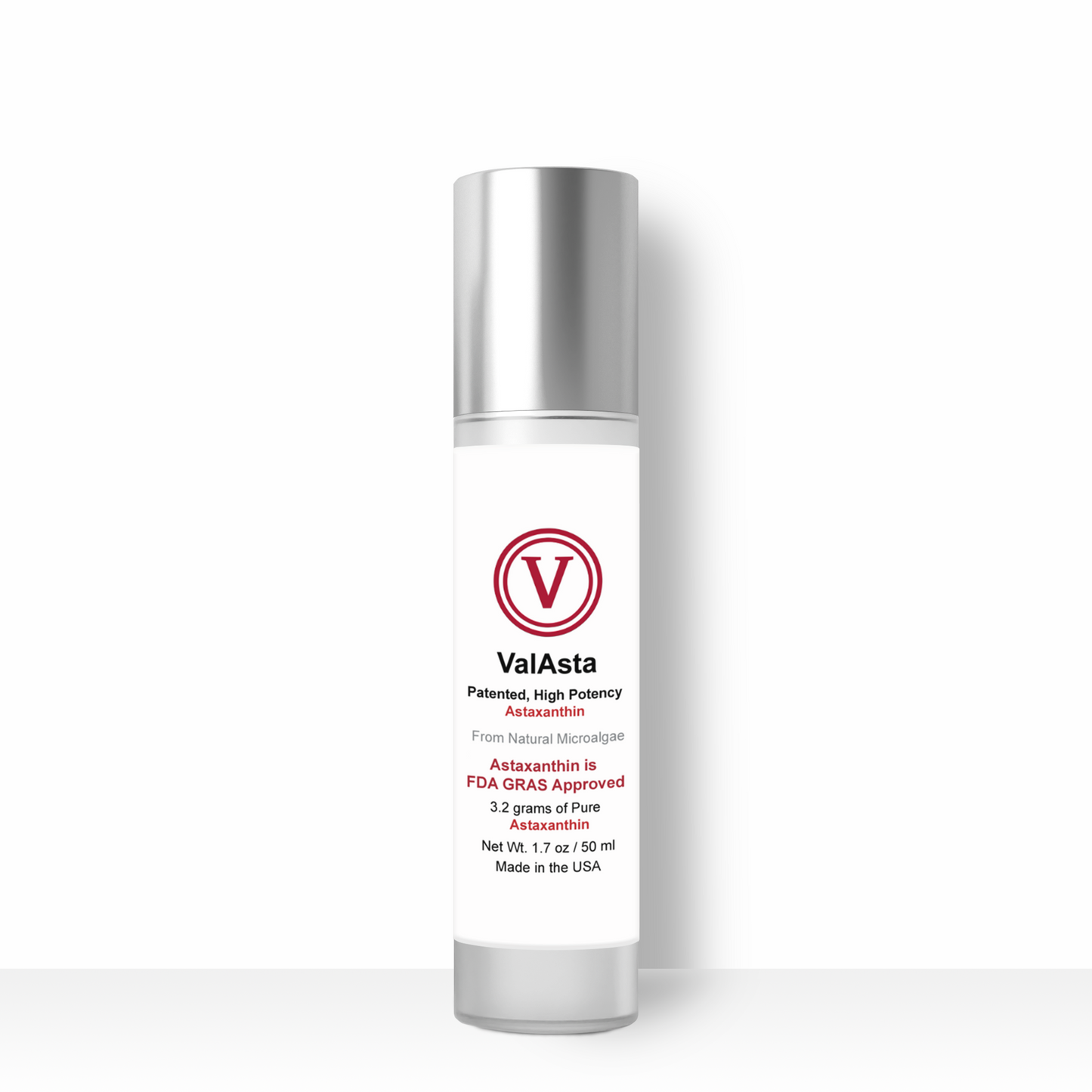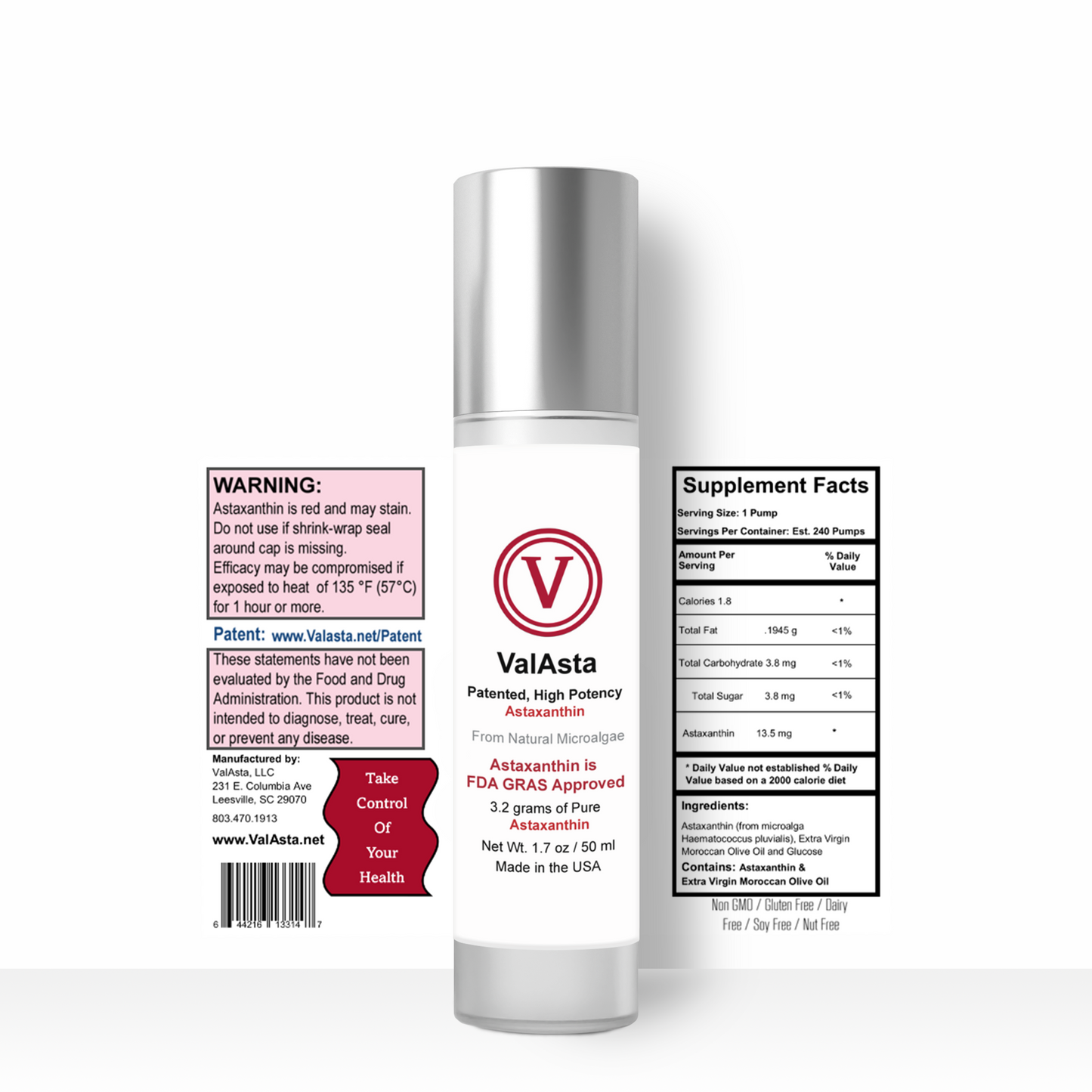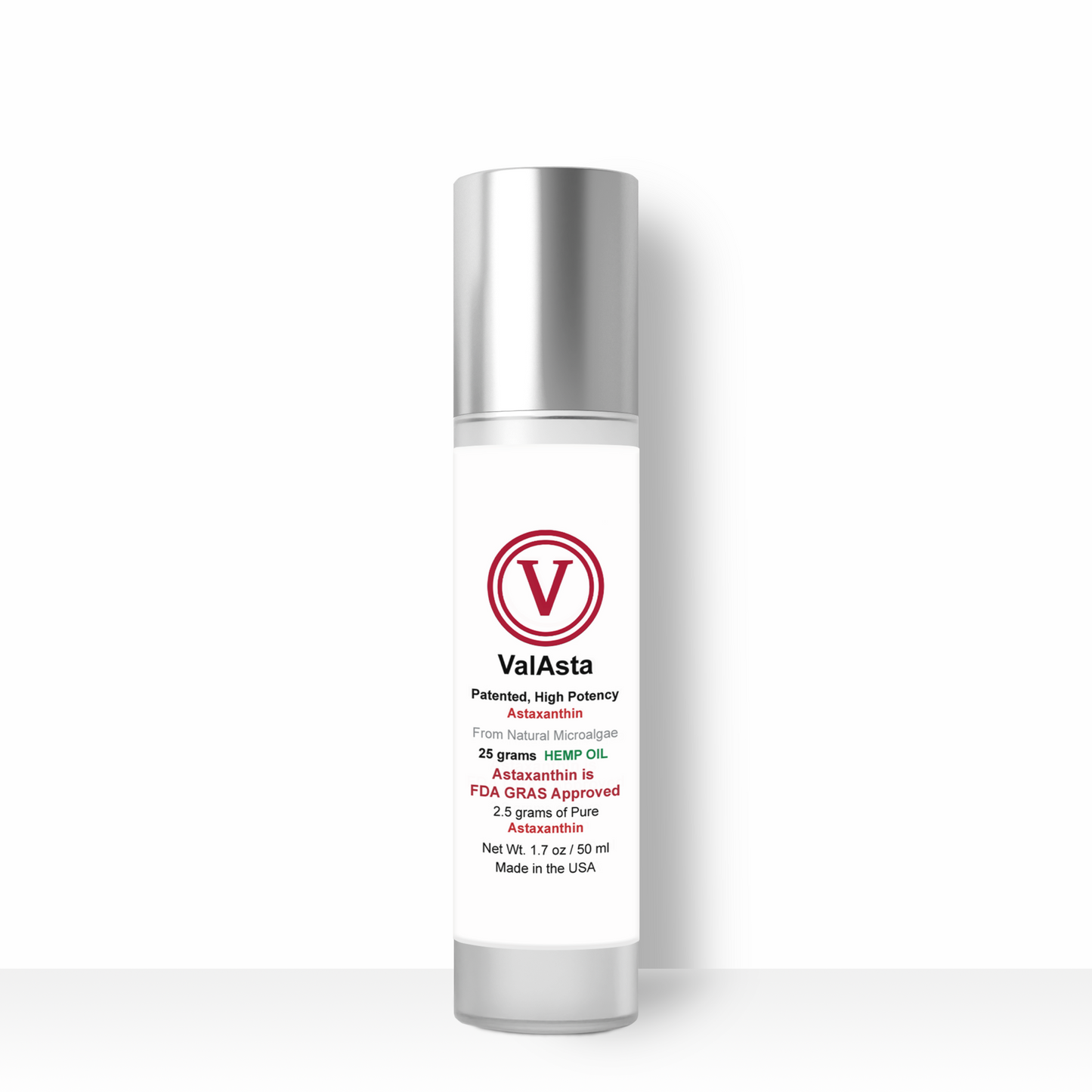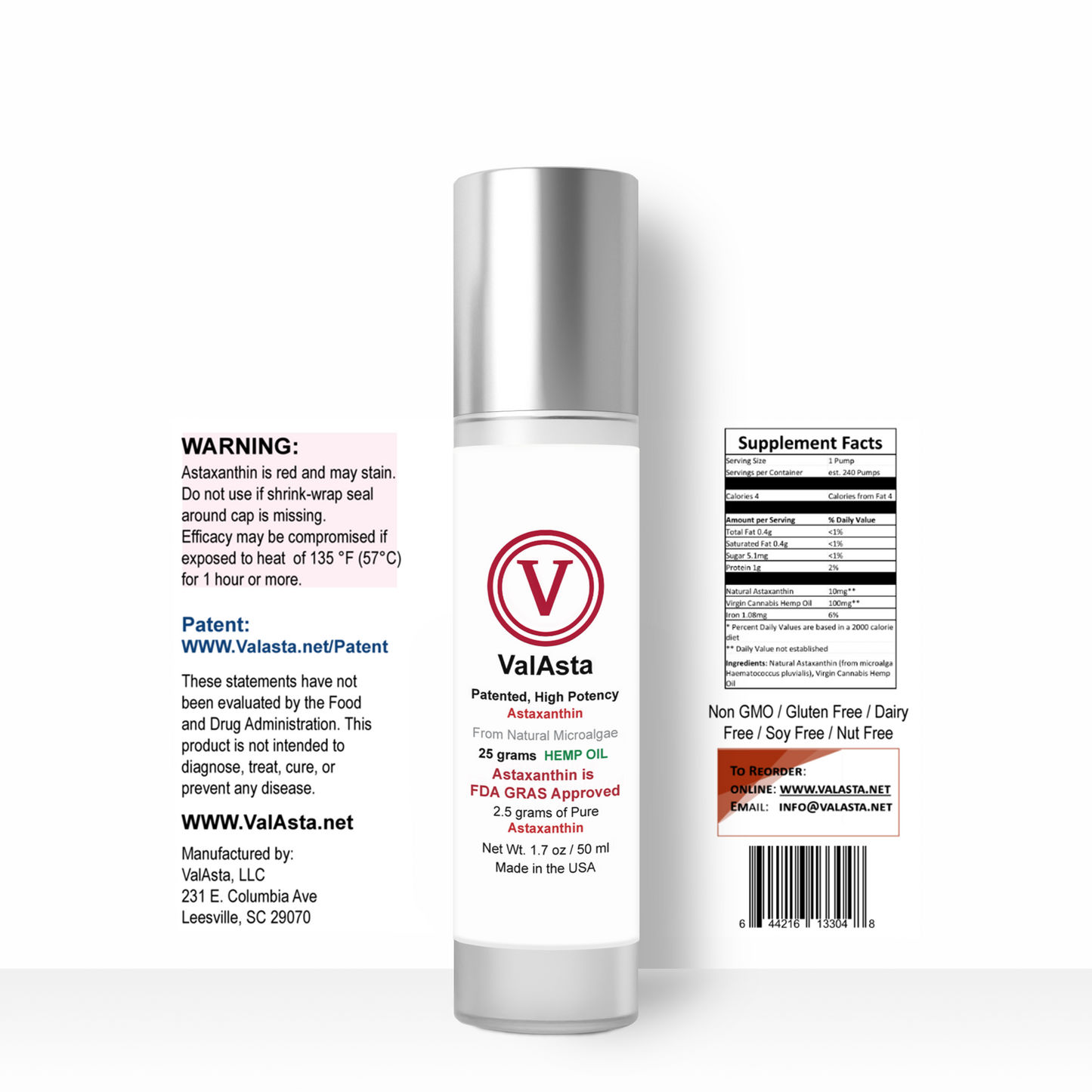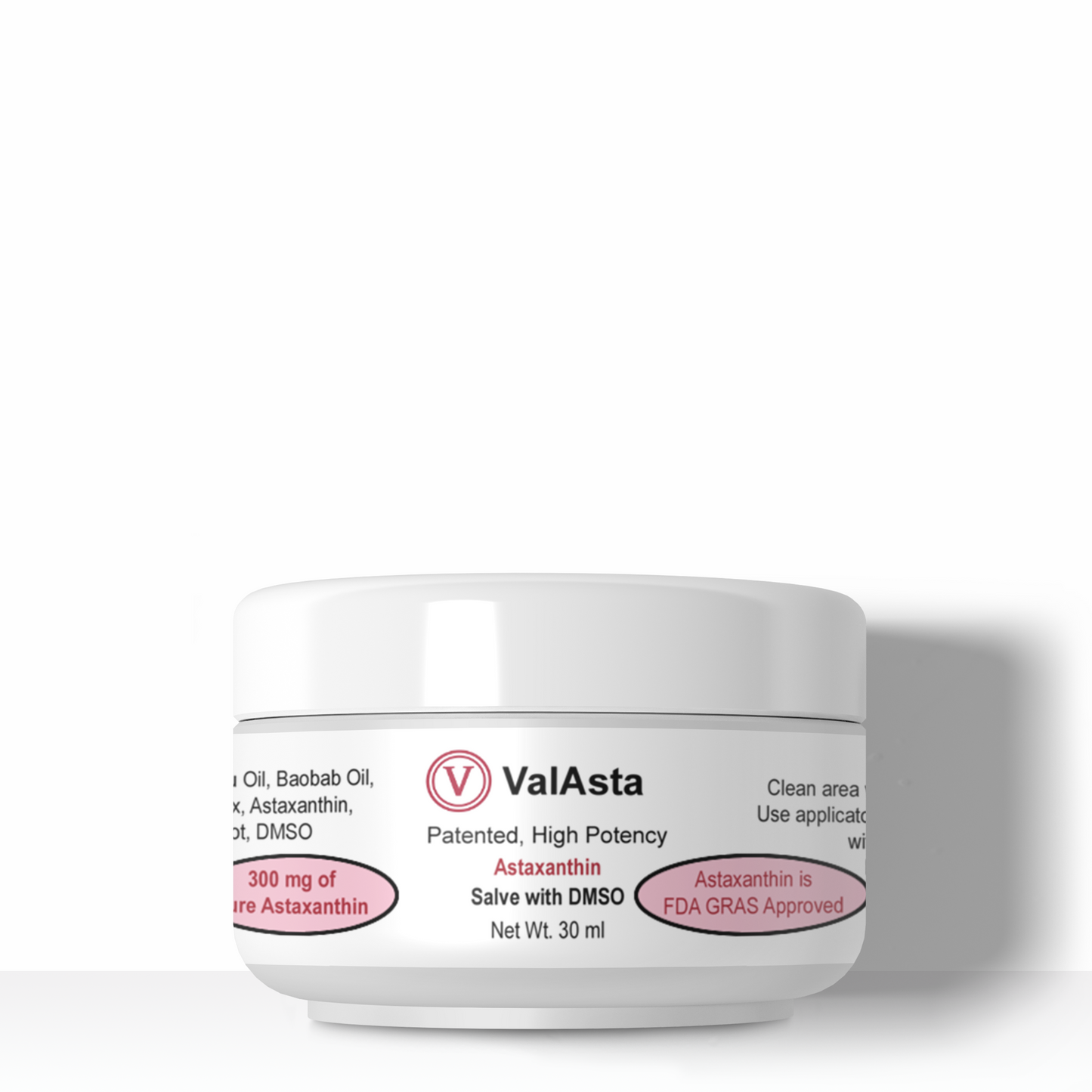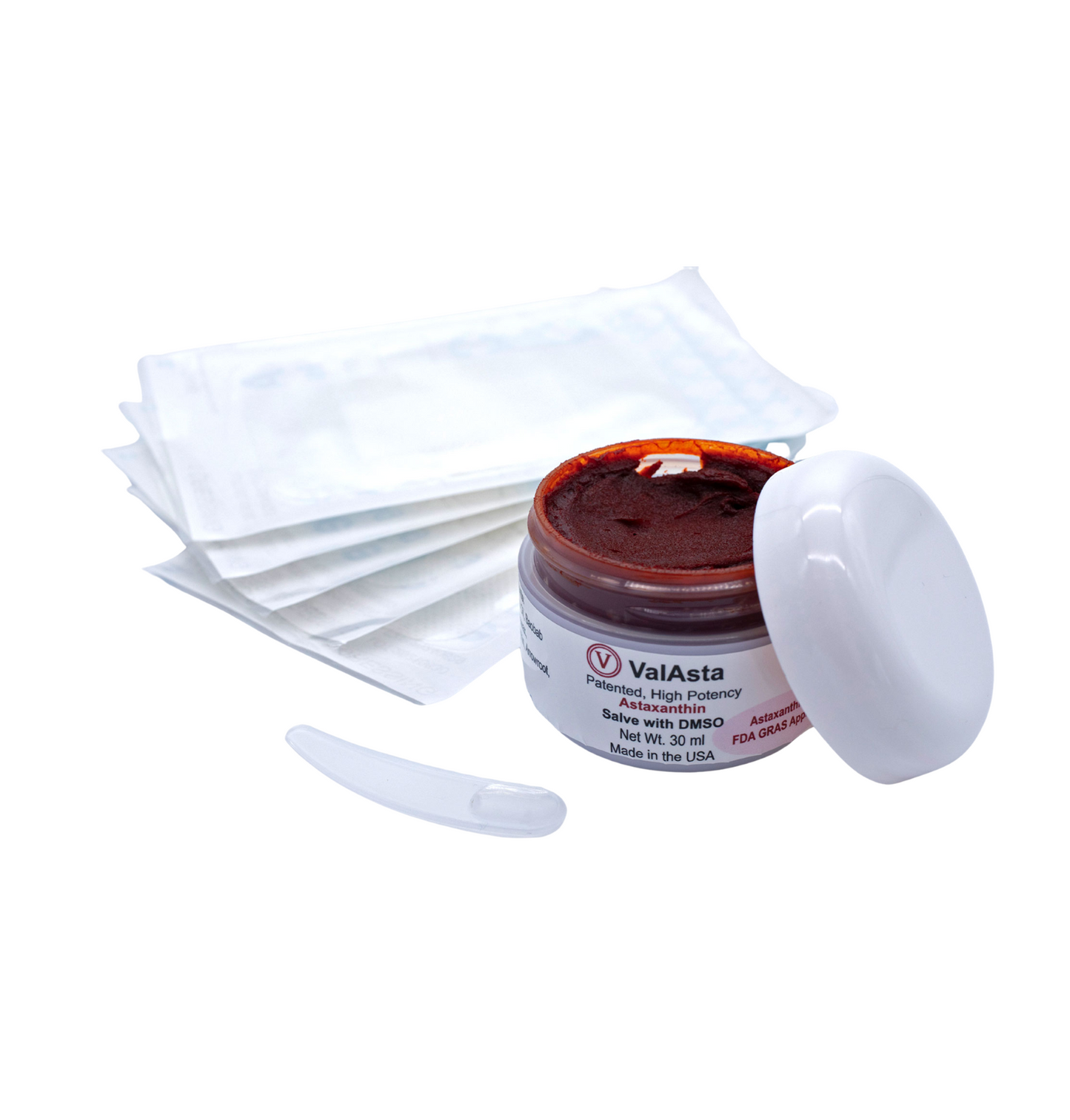
Why is astaxanthin known as “one of nature’s best?
ValAsta / Astaxanthin’s claim to fame is its patent pending process making it more absorbable than other brands leading to increased antioxidant activity. Astaxanthin is often referred to as one of the most powerful antioxidants found in nature. This statement is based on published studies examining astaxanthin’s ability to quench various types of free radicals, and comparing astaxanthin activity to other dietary antioxidants, like Vit. C, E or CoQ 10. The basis for antioxidant claims made about astaxanthin comes from both pre-clinical and human clinical studies reporting changes in several antioxidant markers. Understanding these foundational studies helps us appreciate why ValAsta / Astaxanthin is an exceptional offering on the antioxidant menu.
What are free radicals?
Free radicals are atoms that contain an unpaired electron. Due to this lack of a stable number of outer shell electrons, they are in a constant search to bind with another electron to stabilize themselves—a process that can cause damage to DNA and other parts of human cells. This damage may play a role in the development of cancer and other diseases and accelerate the aging process.
Types of Free Radicals
There are many types of free radicals, though, in humans, the most significant are oxygen free radicals - reactive oxygen species (ROS). Examples include singlet oxygen (when oxygen is "split" into single atoms with unpaired electrons), hydrogen peroxide, superoxides, and hydroxyl anions.
Astaxanthin Compared to Other Antioxidants
Antioxidant activity can be measured using a test tube assay called the Oxygen Radical Absorbance Capacity (ORAC) assay. To put the antioxidant capacity of astaxanthin in context, its activity had to be compared to that of other antioxidants. Nishida et al. 2007, reported that astaxanthin’s antioxidant activity against singlet oxygen was 6000x stronger than vitamin C, 800x stronger than CoQ10, and 110x stronger than vitamin E.
In addition to the strong antioxidant activity reported in Nishida et al. 2007, a unique feature of astaxanthin is its ability to span the cell membrane by matching the architecture of the lipid bilayer, with its more water-loving ends anchored in the polar outer membrane layers, and its lipid-loving middle buried inside the membrane’s hydrocarbon center. This makes astaxanthin well suited to protect membranes against oxidative damage from ROS.

To find out how astaxanthin behaves in a cell system compared to other antioxidants, Tominaga et al. 2009 examined survival of human skin cell fibroblasts upon exposure to singlet oxygen in the presence of different antioxidants. Approximately 85% of skin cells treated with astaxanthin survived exposure to singlet oxygen (p<0.01), whereas fewer than 30% survived when treated with any other antioxidant (beta-carotene, lutein, alpha-tocopherol, CoQ10, alpha-lipoic acid, vitamin C, and catechin; N.S.). Taken together with Nishida et al. 2007, we can conclude that astaxanthin is a superior singlet oxygen quencher in both the test tube and in a cellular system in vitro.
So, by neutralizing free radicals and reducing the damage caused by ROS we could minimize or slow the development of cancer and other diseases including the aging process.
For questions about ROS or how ValAsta works, please call 803-470-1913, ext. 1 to speak to our nurse.

